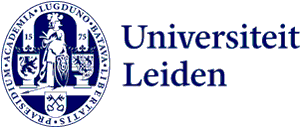
Nerve stimulation effective in patients with untreatable cluster headaches
Extremely painful chronic cluster headaches – sometimes referred to as ‘suicide headaches’ – can be prevented by stimulating the occipital nerve in the back of the head, according to research conducted by Professor Emeritus of Neurology Michel Ferrari from Leiden University Medical Center (LUMC). The study showed that nerve stimulation reduces the frequency and severity of attacks in patients who could not be treated with medication. The researchers reported in The Lancet Neurology that some subjects continued to feel the benefits for several years.
Chronic cluster headaches, also known as ‘suicide headaches’, are a severely debilitating chronic brain condition that causes unbearable headaches, usually several times a day. An average attack lasts between one and two hours, and as they also often come on at night, they can cause serious disruption to sleep. In many cases, existing treatments are not effective, making some patients desperate.
Stimulating the occipital nerve
A large-scale study conducted in several different countries investigated the effectiveness and safety of occipital nerve stimulation in patients whose chronic cluster headaches could not be prevented, despite multiple attempts to treat them with medication. ‘The occipital nerve is easily accessible, being located near the surface of the skin on the back of the head, and it is connected to the brain stem,’ says Ferrari. ‘That explains why stimulation of this nerve can prevent attacks of cluster headaches.’
Dramatic reduction in symptoms
A small neurostimulator was implanted under the skin on the back of the subject’s head, close to the occipital nerve, and connected to a battery inserted under the skin of the buttock or midriff. The implantation and stimulation protocols were supervised by Professor Frank Huygen from the Anaesthesiology department at Erasmus MC. ‘Standardisation of the procedure in all the participating centres was the key to the success of this study,’ Huygen explains. Once the device had been implanted, 130 patients received high or low electric stimulation of the nerve at random over a period of six months. Patients saw a dramatic reduction in the frequency and severity of the attacks within weeks. ‘Some patients even became attack free,’ says Ferrari. The improvement could be maintained for several years by means of a personalised stimulation protocol.
Patients were well able to tolerate the treatment, with more than 90% of subjects being very satisfied and willing to recommend the treatment to other patients. ‘I started work on this study as a PhD student 10 years ago,’ Poldi Wilbrink, the co-first author, remembers. ‘Now I’m a neurologist, and it’s fantastic to see so many patients who used to be in despair having improved so much.’ In addition, says Ferrari, ‘Such a remarkable improvement is even more impressive when you realise that these were very severely impacted, chronically ill patients who saw no improvement from existing treatments.’
Covered by Dutch health insurance
This ICON study was funded by Ferrari’s NWO (Dutch Research Council) Spinoza Prize, a grant from Medtronic and a €6 million development grant from the Ministry of Health, Welfare and Sport as part of a conditional funding programme. When the research was complete, the Ministry decided to include nerve stimulation in health insurance coverage for chronic cluster headaches. Patient organisation Hoofdpijnnet welcomes that decision: ‘This is great news for all those patients who have suffered for so long with untreatable, unbearable cluster headaches.’
Selected medical centres
Specific expertise is required for the diagnosis and treatment of patients with chronic cluster headaches and the application and monitoring of nerve stimulation. Only a small number of centres are permitted to provide the therapy in the Netherlands, working in close cooperation: LUMC (Dr Rolf Fronczek), Erasmus MC (Professor Frank Huygen), Canisius Wilhelmina Hospital (Dr Wim Mulders/Dr Kurt Erkan), Zuyderland Hospital (Dr Poldi Wilbrink) and Maastricht UMC (Dr Onno Teernstra).
According to Dr Fronczek, a neurologist who is now responsible for treating patients with cluster headaches at LUMC, ‘Patients who could not previously be treated can now take advantage of a new and promising treatment. However, scrupulous evaluation and monitoring are still necessary to keep their treatment at the optimum level.’
To find out more, see the article in The Lancet Neurology.
Photo above: Pavel Danilyuk via Pexels
